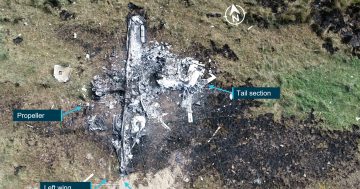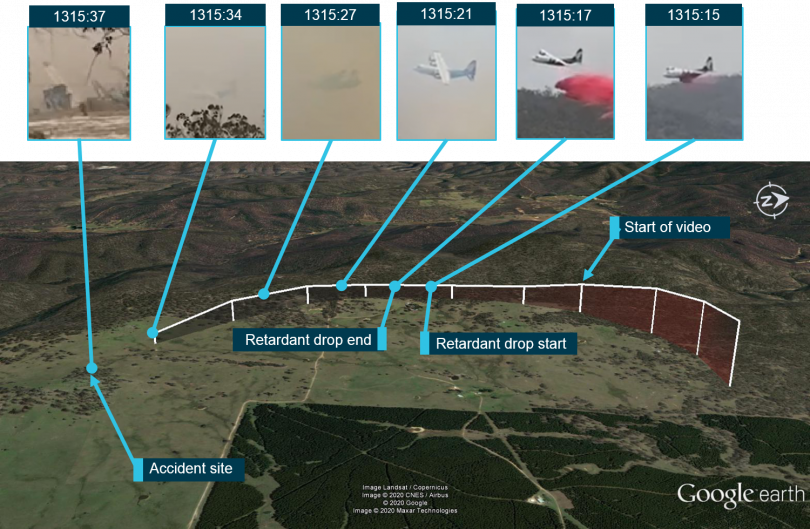
Images show the aircraft’s altitude and approximate flight path at key times. Images: Google Earth, witness videos and SkyTrac data, annotated by the ATSB.
A detailed investigation into the last moments of a large air tanker that crashed near Peak View north of Cooma during the summer’s bushfires on 23 January 2020 has revealed no evidence of structural failure or pre-existing damage to the aircraft.
While conducting fire control operations on the Good Good fire, the aircraft collided with terrain after completing a fire retardant drop 50 km north-east of the Cooma-Snowy Mountains Airport, near Peak View.
The three American flight crew from Coulson Aviation who were onboard the Lockheed EC130Q Hercules Large Air Tanker were killed and the aircraft was destroyed.
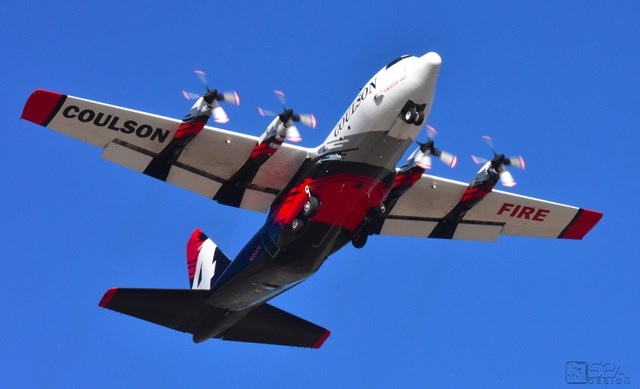
An aircraft the same as this crashed near Peak View on 23 January. Photo: Coulson Aviation.
An interim report from the Australian Transport Safety Bureau (ATSB) does not contain findings but details the accident’s sequence of events. An examination of the accident site and recovered wreckage found no evidence of structural failure or pre-existing damage to the aircraft.
The report also looked at the weather and environmental influences, aircraft performance and handling, and operating policies and procedures that led to the crash.
The investigation found that the aircraft’s cockpit voice recorder was successfully downloaded; however, no audio from the accident flight had been recorded.
The investigation team also drew upon transponder data (used for air traffic control and surveillance), data recorded by the aircraft’s SkyTrac tracking system (used for monitoring by the NSW Rural Fire Service), and video of the accident taken by firefighters on the ground to develop an understanding of the aircraft’s flight path.
Analysis of the witness video confirmed the aircraft initially established a positive rate of climb and was banking to the left following the retardant drop.
After climbing for about 10 seconds the aircraft was then observed to roll from a left bank to a slight right bank. A maximum height of about 330 feet above ground level was reached before the aircraft was observed descending. Seven seconds later, the aircraft was observed at a very low height above the ground, in a left bank, before it collided with the ground.
In the video the aircraft is intermittently obscured by smoke. It is unclear if the aircraft flew behind the smoke or entered smoke.
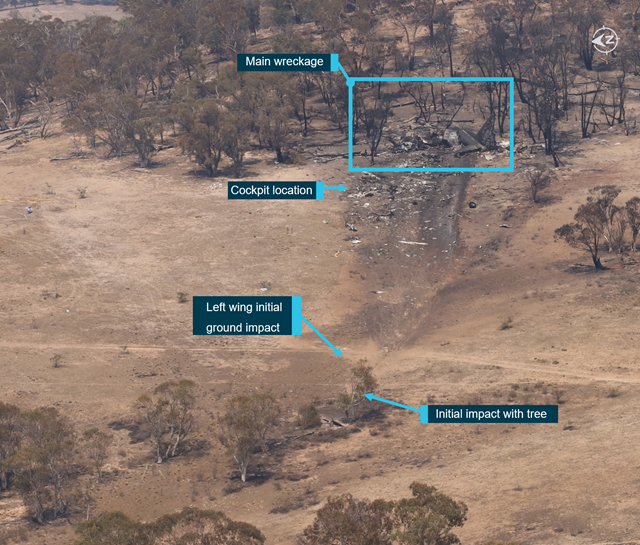
Accident site overview showing the wreckage trail. Photo: ATSB.
ATSB Chief Commissioner Greg Hood said the interim report has helped investigators develop a detailed picture of the tragic accident’s sequence of events.
“To date, the ATSB has interviewed other pilots and key personnel from the aircraft operator, NSW Rural Fire Service personnel involved in aviation operations, witnesses, C-130 and other aerial firefighting pilots, and key personnel in overseas aerial firefighting operations,” Mr Hood said.
“All major sections of the aircraft’s structure were identified. No pre-existing airframe issues were identified, and there was no evidence of an in-flight break-up or pre-impact structural damage.
“All four engines and 16 propeller blades were located on-site, and a subsequent teardown inspection of the engines indicated they were rotating at impact.”
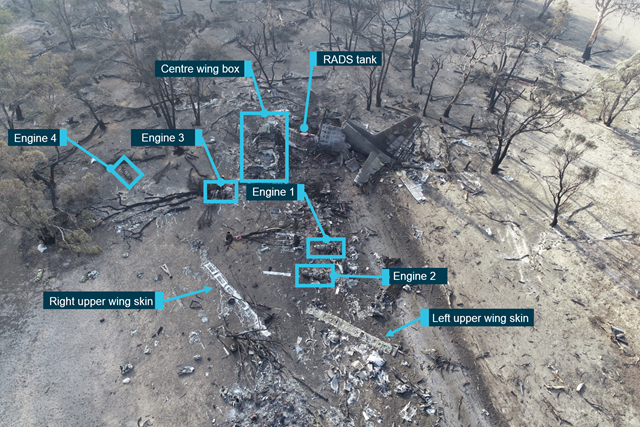
Main aircraft wreckage components. Photo: ATSB
The aircraft was originally tasked to conduct retardant drops at the Adaminaby fire ground. However, after conducting a number of circuits over the fire ground, the crew determined that conditions were too windy and smoky to conduct a drop. Instead, the Cooma Fire Control Centre re-tasked the C-130 to conduct a retardant drop to protect property at Peak View, about 58 km to the east of Adaminaby.
Following the accident, the ATSB received multiple witness reports of the weather conditions at Peak View, with witnesses all consistently reporting very strong winds from the north-west, while the wind strength at ground level was also being influenced by the local terrain.
Mr Hood said a Bureau of Meteorology analysis of the weather conditions on the day of the accident indicated that a cold front was approaching the accident location, with hot and strong north to north-westerly winds ahead of the front.
The interim report also notes that the flight crew were appropriately licenced and endorsed, held valid medical certificates and there were no indications they were fatigued. However, there was insufficient information available to the ATSB about the crew members’ sleep and non-duty activities to estimate fatigue levels with confidence.
“The investigation is continuing. However, should a critical safety issue be identified during the course of the investigation, the ATSB will immediately notify relevant parties so appropriate and timely safety action can be taken,” Mr Hood said.
A final report will be published at the conclusion of the investigation.












